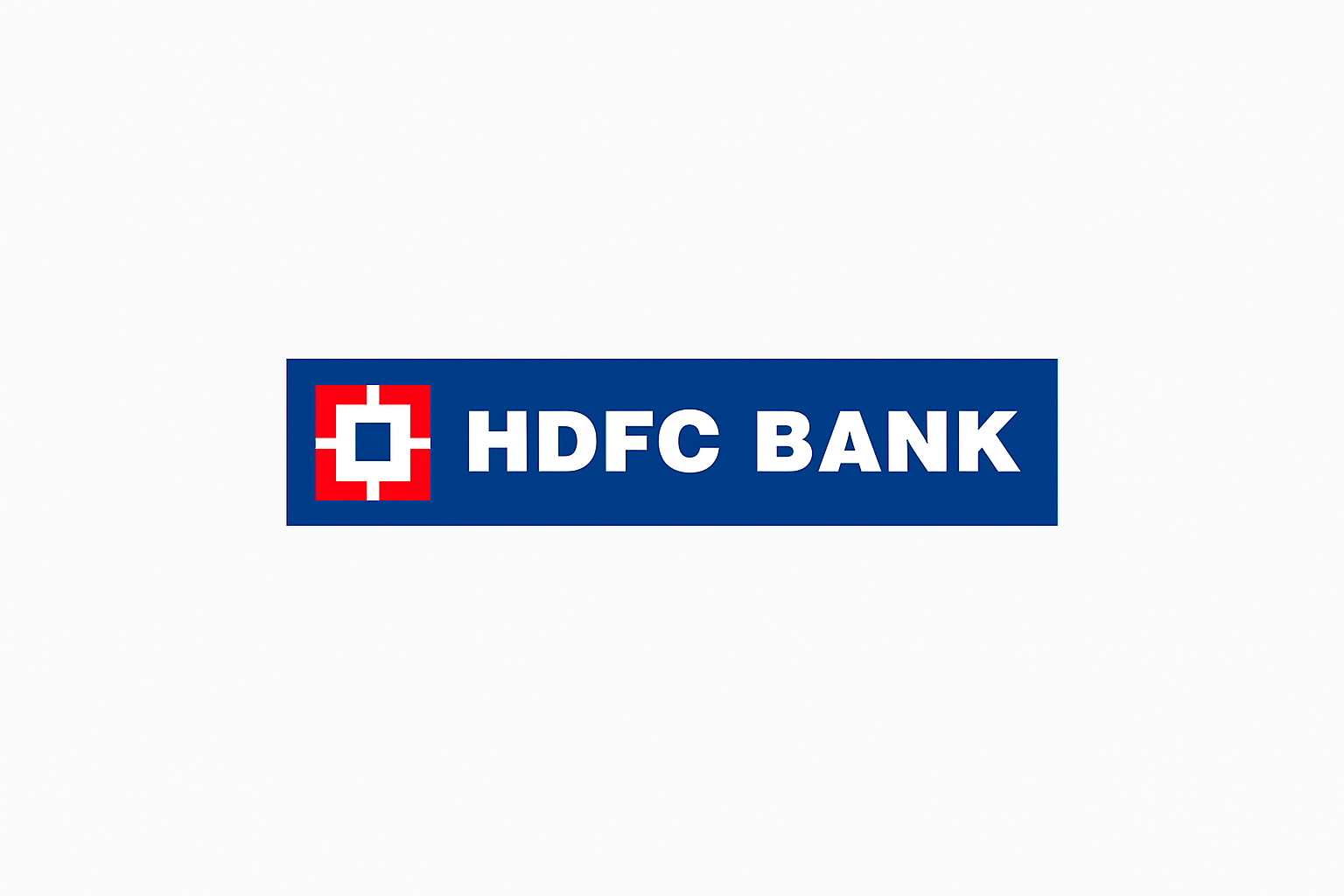Introduction
HDFC Bank, India’s largest private-sector lender by assets, reported a 1.31% year-on-year decline in its standalone net profit to ₹16,258 crore for the first quarter of the financial year 2025-26 (Q1FY26). The results, which came after the market closed on July 18, 2025, surprised analysts who had anticipated marginal growth. This marks the first decline in quarterly profit for HDFC Bank since its merger with HDFC Ltd., and it reflects both structural and macroeconomic challenges that the bank is currently navigating.
In this detailed article, we will delve into the financial performance, key operational metrics, reasons behind the dip, and how the market and investors are reacting to the announcement. We’ll also look at how HDFC Bank plans to respond going forward and what it means for stakeholders and the Indian banking industry as a whole.https://www.hdfcbank.com/
Headline Financials: Q1FY26 vs Q1FY25
| Metric | Q1FY26 | Q1FY25 | YoY Change |
|---|---|---|---|
| Net Profit | ₹16,258 crore | ₹16,512 crore | ↓ 1.31% |
| Net Interest Income (NII) | ₹29,812 crore | ₹23,599 crore | ↑ 26.3% |
| Operating Expenses | ₹17,301 crore | ₹11,805 crore | ↑ 46.6% |
| Net Interest Margin (NIM) | 3.4% | 4.1% | ↓ 70 basis points |
| Gross NPA | 1.24% | 1.17% | ↑ 7 basis points |
| CASA Ratio | 38.2% | 42.5% | ↓ 4.3% |
| Advances | ₹24.87 lakh crore | ₹16.2 lakh crore | ↑ 53.5% |
| Deposits | ₹23.45 lakh crore | ₹18.8 lakh crore | ↑ 24.7% |
Understanding the Decline in Profit
The decline in HDFC Bank’s Q1FY26 net profit, despite a strong rise in net interest income and advances, stems from a combination of higher expenses, slower deposit growth, and integration-related pressures post the HDFC-HDFC Bank merger.
1. Sharp Rise in Operating Expenses
One of the biggest factors contributing to the drop in profit was a 46.6% surge in operating expenses, reaching ₹17,301 crore. This rise includes:
- Merger-related expenses like system integration, brand consolidation, and employee restructuring.
- Increased provisions for employee benefits, marketing, and technology investments.
- A push for expansion into semi-urban and rural areas, resulting in higher costs.
2. Narrowing Net Interest Margin (NIM)
The bank’s net interest margin declined to 3.4%, down from 4.1% a year ago. This was mainly due to:
- High cost of funds as deposit growth lagged behind credit growth.
- Lower return on assets acquired from HDFC Ltd. (especially housing loans with longer maturity and lower yields).
- Ongoing liquidity management challenges post-merger.
3. Slower CASA Growth
The bank reported a CASA (Current Account and Savings Account) ratio of 38.2%, down significantly from 42.5% a year ago. CASA deposits are typically a cheap source of funds, and a fall in this ratio leads to increased funding costs.
Positive Indicators: Where HDFC Bank Still Shines
Despite the headline profit dip, several key performance indicators remain strong, reinforcing HDFC Bank’s long-term fundamentals.
1. Credit Growth
The bank’s advances grew 53.5% YoY, largely due to the inclusion of the home loan portfolio of HDFC Ltd. Retail, SME, and corporate loans also saw healthy traction, indicating continued demand.
2. Robust Net Interest Income
Net Interest Income (NII) jumped by 26.3% to ₹29,812 crore, reflecting strong loan book growth and steady interest rate spreads, even as NIM compressed.
3. Stable Asset Quality
The Gross Non-Performing Assets (GNPA) rose only marginally from 1.17% to 1.24%, indicating the bank’s continued focus on prudent lending and recovery.
4. Healthy Capital Adequacy
The bank maintained a Capital Adequacy Ratio (CAR) of 18.2%, well above the regulatory requirement, giving it ample cushion for future growth and lending.
Management Commentary
Sashidhar Jagdishan, Managing Director and CEO of HDFC Bank, addressed the Q1FY26 performance:
“This quarter reflects the transition pain and synergy realization post-merger. While the headline numbers may appear muted, the underlying business remains strong. We are on track to unlock the full potential of the HDFC-HDFC Bank integration and improve profitability in the coming quarters.”
He further emphasized:
- The digital transformation journey remains central to customer acquisition.
- The bank is focused on improving liability franchise by deepening its CASA base.
- Synergies from the merger are expected to start materializing fully in FY27.
Brokerage & Market Reactions
Following the results, market sentiment remained mixed. The HDFC Bank stock closed marginally lower, reflecting cautious optimism.
Brokerage Views:
- Motilal Oswal: “Short-term pain, long-term gain. NIM pressure and costs were expected, but loan growth remains robust. Retain ‘BUY’ with target ₹2,050.”
- Kotak Institutional Equities: “Integration costs may continue to weigh for 1–2 more quarters. Maintain ‘ADD’ with target ₹1,975.”
- Jefferies India: “Earnings miss was driven by margin contraction. Housing loan drag will ease gradually. Reiterate ‘HOLD’ rating.”
Strategic Focus Areas Going Ahead
HDFC Bank has outlined several strategic priorities for FY26 and beyond to regain momentum:
1. Deepening Rural & Semi-Urban Penetration
The bank plans to open over 1,500 new branches in underbanked regions, improving its retail deposit base and financial inclusion.
2. Digital Banking & Fintech Partnerships
The focus is on expanding mobile and internet banking platforms, as well as exploring fintech tie-ups to cater to younger, tech-savvy customers.
3. Synergy Realization Post Merger
The integration of housing finance, treasury, and operations functions from HDFC Ltd. is expected to bring cost efficiencies and cross-selling opportunities by mid-FY27.
4. Focus on CASA and Retail Deposits
The bank is launching campaigns to regain CASA strength, offering bundled products and higher yields to attract sticky retail customers.
Industry Impact and Comparison
HDFC Bank’s Q1FY26 earnings come at a time when the Indian banking sector is undergoing rapid digitization, consolidation, and interest rate realignment.
Comparison with Peers:
| Bank | Q1FY26 Profit (YoY) | NIM | CASA Ratio |
|---|---|---|---|
| ICICI Bank | ↑ 18.5% | 4.4% | 43.8% |
| Axis Bank | ↑ 12.2% | 4.1% | 39.9% |
| SBI | ↑ 17.7% | 3.6% | 44.2% |
| HDFC Bank | ↓ 1.31% | 3.4% | 38.2% |
While HDFC Bank has traditionally outperformed peers in profitability and asset quality, margin compression and CASA drag have put it slightly behind in recent quarters.
Investor Outlook
Investors should take a balanced view of HDFC Bank’s Q1FY26 performance:
- The short-term profit miss should be viewed in the context of long-term value creation post-merger.
- Strong credit growth, healthy capital levels, and stable NPAs are positives.
- Shareholders can expect earnings normalization in FY27, once integration is complete and margins stabilize.
For long-term investors, HDFC Bank remains a blue-chip stock with potential for strong returns driven by India’s growing credit demand and rising middle class.
Conclusion
HDFC Bank’s Q1FY26 results present a classic case of short-term pain for long-term gain. The dip in net profit, though modest, highlights the operational complexity following one of the largest corporate mergers in Indian financial history.
However, the bank’s fundamentals remain intact — supported by a large customer base, sound risk management, and strategic expansion plans. As India’s economy gears for its next phase of growth, HDFC Bank is well-positioned to benefit, provided it addresses current challenges around costs, deposits, and margins effectively.
The next few quarters will be critical in proving whether HDFC Bank can sustain its leadership in India’s competitive banking sector while evolving as a universal financial powerhouse.



